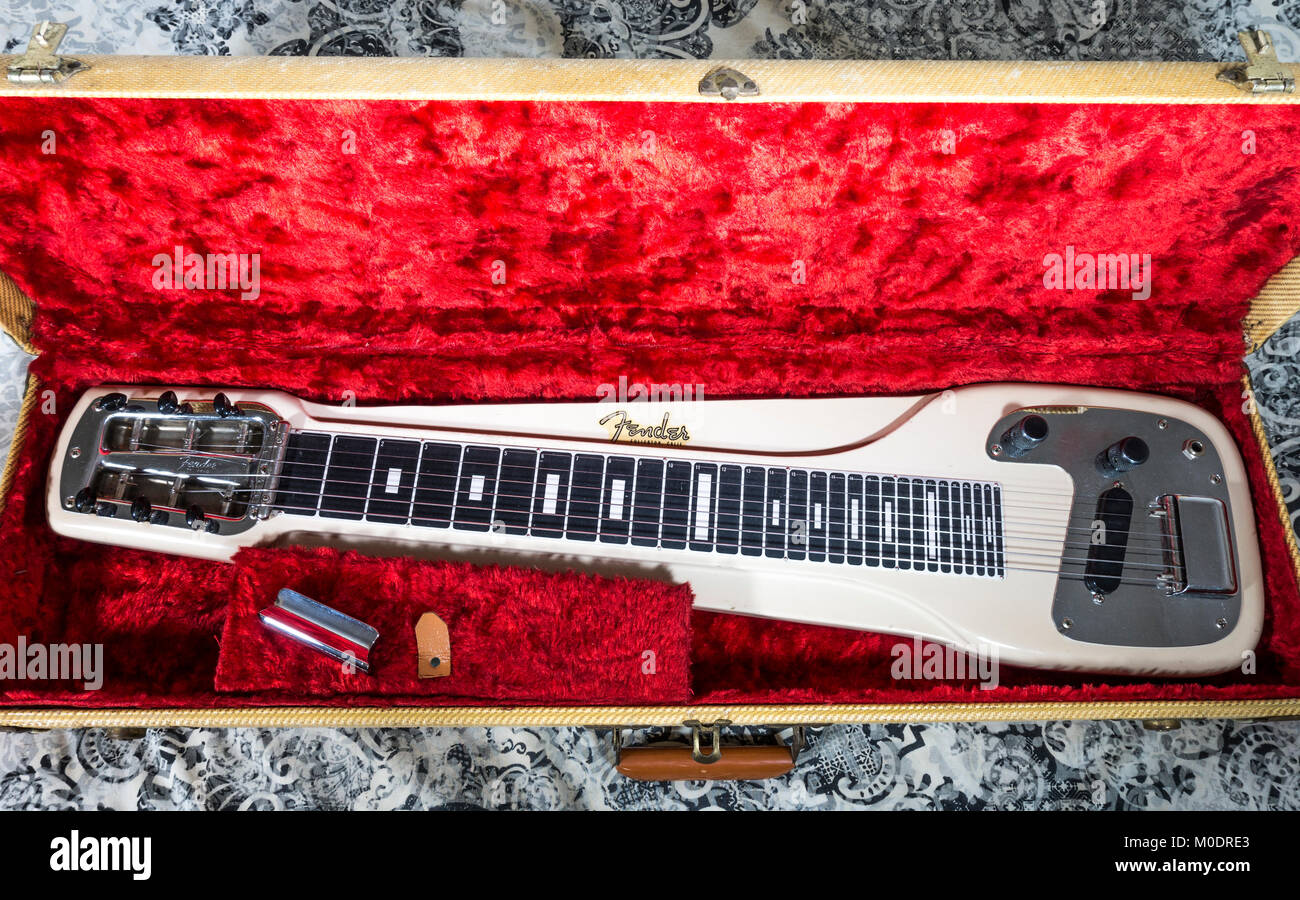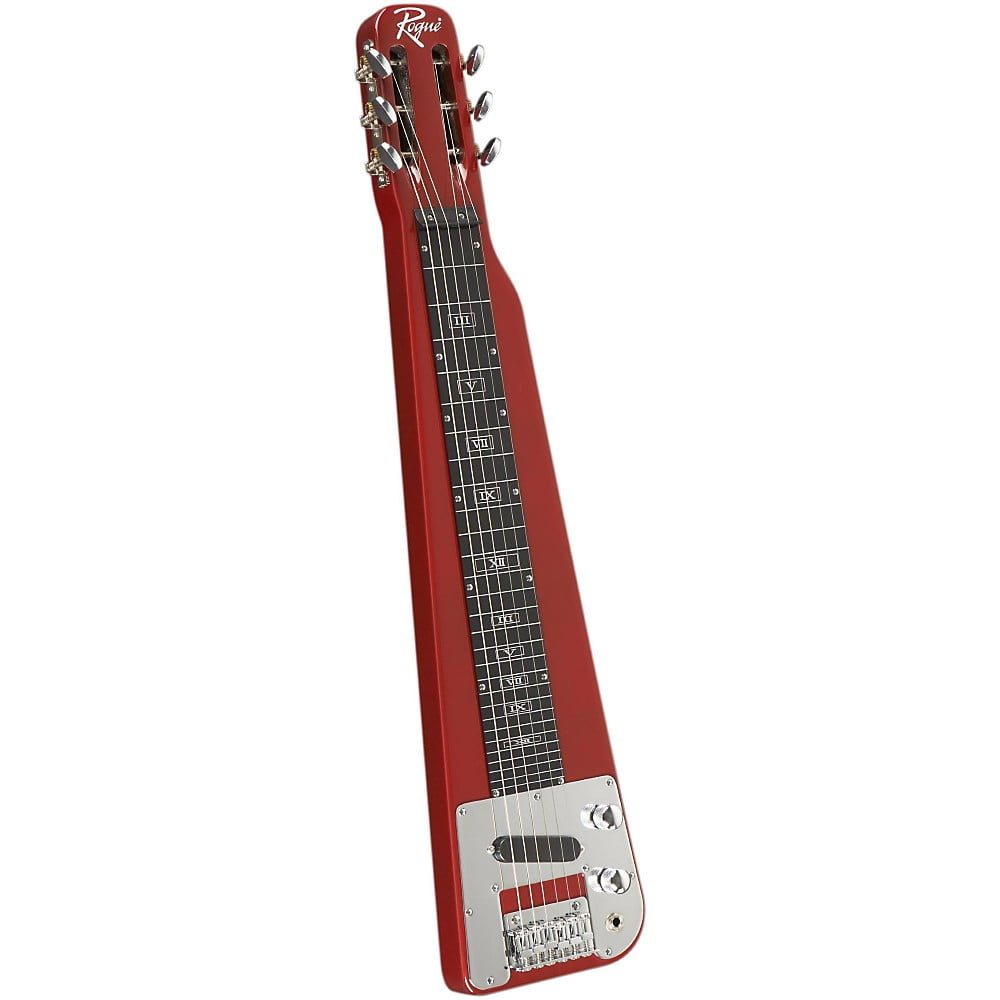

The first commercially successful tremolo arm was the Bigsby vibrato tailpiece, most often just called a Bigsby, and invented by Paul Bigsby. Thankfully, it was replaced by the Ac'cent Vibrola, which used no coiled springs to change tension, giving it less chance to throw the guitar out of tune. It was a side-to-side action vibrato unit (rather than the up-down action of later units) that was notorious for throwing the guitar out of tune, hence John's replacing it with a Bigsby B5. A hand operated unit was later created and used on Rickenbacker's Capri line of guitars in the '50's, such as John Lennon's '58 325. It was developed by Doc Kauffman to simulate the pitch manipulation available with steel guitars. They were not operated by hand, but rather moved with an electrical mechanism. One of the first mechanical tremolo/vibrato units (although not hand-operated) was the Kauffman Vibrato as used on Rickenbacker Vibrola Spanish guitars. In this article, the words are used interchangeably.Īlmost all tremolo arms are based on one or more of five basic designs: See vibrato unit for details of the history of these terms in relation to electric guitar, and related issues. This reversal of terminology is generally attributed to Leo Fender and the naming of the Fender 'Vibroverb' amplifier, which actually used tremolo (rapid volume changes) in an attempt to create a vibrato-like (rapid changes in pitch) sound. The other form of the name is Whammy Bar which is more commonly accepted and used by a wider range of guitar players and even fans. Tremolo, on the other hand, is exactly the effect produced by the vibrato units built in to many classic guitar amplifiers. While the tremolo arm can produce variations of pitch including what is normally termed vibrato, it can never produce the effect normally known as tremolo (modulation of volume). Traditionally, electric guitarists have reversed the normal meanings of the terms vibrato and tremolo when referring to hardware devices and the effects they produce. 2.6 Fender two-point synchronized tremolo.

Downing, Brian May, and many surf music bands have used the tremolo to great effect, and the effects they created using it have become a recognized part of many styles of electric guitar. Since the regular appearance of mechanical tremolo arms in the 1950s, artists such as Kirk Hammett, Richie Sambora, Jimi Hendrix, Kevin Shields, Jeff Beck, Tom Morello, Frank Zappa, Lonnie Mack, Ritchie Blackmore, Steve Lukather, Eddie Van Halen, Duane Eddy, Dimebag Darrell, David Gilmour, Hank Marvin, Jimmy Page, Randy Rhoads, Joe Satriani, Steve Vai, K.K. However, it has also made many sounds possible that could not be produced by the old technique. The tremolo arm began as a mechanical device for more easily producing the vibrato effects that blues and jazz guitarists had long produced on arch top guitars by manipulating the tailpiece with their picking hand. Some other current Stratocaster models still use the older classic system, while still others use the licensed locking trem. The term vibrola is also used by some guitar makers to describe their particular tremolo arm designs.Ĭloseup of a Squier Stratocaster, showing the two-point synchronized tremolo found on most current higher-end Fender guitars.


Instruments without this device are called hard-tail. A tremolo arm, tremolo bar, whammy bar or wang bar is a lever attached to the bridge and/or the tailpiece of an electric guitar or archtop guitar to enable the player to quickly vary the tension and sometimes the length of the strings temporarily, changing the pitch to create a vibrato, portamento or pitch bend effect.


 0 kommentar(er)
0 kommentar(er)
